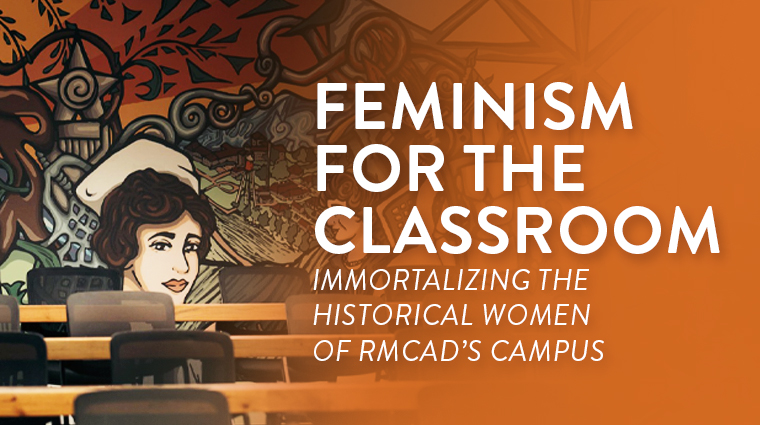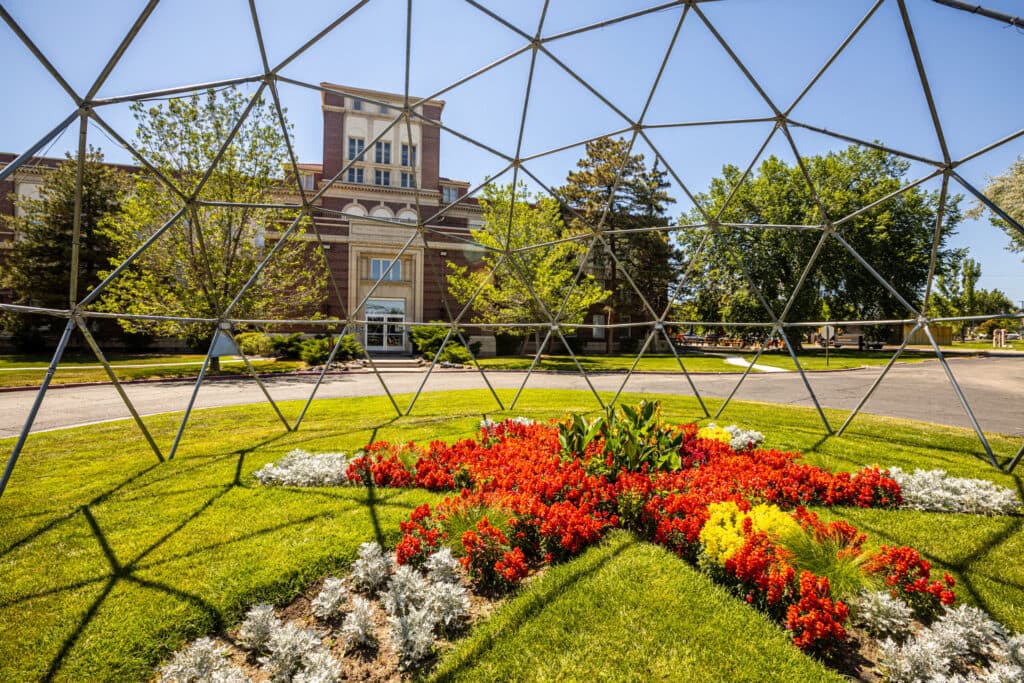You likely already know that the RMCAD campus has a long and storied history even before it was an art college. However, do you know about the women who dedicated their lives to the local community where RMCAD now stands? That’s the question the 360 Thinkers Club is asking members of the RMCAD community. The 360 Thinkers is a student organization that aids members in honing their creativity and inspiring individuality and group collaboration. The club was founded by Zuzana Tothova, an online art education student, as a collaboration between on-campus and online students. The club’s largest collaboration to date is a mural on the RMCAD campus in Triboro 102, which was installed in October 2024. The mural heralds three of the often-overlooked figures in our campus’ story, encouraging the RMCAD community by highlighting these inspiring women.
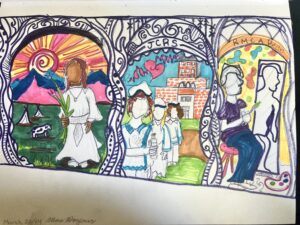
The 360 Thinkers Club wanted to find a way to immortalize all the outstanding women who have played a role in fostering RMCAD’s community, but with limited time and resources, they chose three women who each made a larger-than-life impact. The women they chose were Chipeta, an Indigenous leader of the Ute tribe and wife of chief Ouray; Mary Harris, the president of the Jewish Consumptive Relief Society (JCRS) and the namesake of RMCAD’s auditorium; and Bessie Marold, a World War I veteran and head nurse of the JCRS. As president of the 360 Thinkers, Tothova says the mural’s legacy is about “healing.” She saw these women as healers who never got to share their stories. By creating this piece, the 360 Thinkers attempted to heal the narrative around each of these women. However, honoring the likeness of each one of these incredible women came with its own challenges.
Chipeta

Chipeta is a prolific figure not only in the Indigenous community but also for women across the United States. Born in 1834, she lived a long life as a diplomat who negotiated with the U.S. government on behalf of her tribe and was one of the first Indigenous women to ever speak in front of Congress. The 360 Thinkers wanted to acknowledge the tribal land where RMCAD’s campus now stands with care and sensitivity.
As such, a faculty member connected the club with an Indigenous artist, Chelsea Kaiah James, for insights on depicting Chipeta respectfully. Tothova shared that through these conversations, the club learned that Chipeta wouldn’t have “wanted to have her face on a wall because it wouldn’t align with her beliefs.”. Instead, it was suggested that the club find a way to honor her without having her “closed in” ensuring the freedom for her people and herself was depicted. The 360 Thinkers didn’t want to lose this important acknowledgment, so they took an even deeper dive into their research. A breakthrough came in the form of translation. In Ute Shoshonean, Chipeta’s name translates to “singing white bird.” This inspired the club to depict Chipeta as a white songbird flying freely above the Colorado landscape.
Mary Harris

Like many women in her era, Mary Harris was almost entirely overlooked by history. As the president of the JCRS, she aided in building a community for those in need of medical care. Often confused for Mary Harris Jones, the 360 Thinkers had only one photo as a reference for the correct Mary Harris. Despite her incredible contributions to the JCRS, there was far less documentation of her, than men of the time, like Dr. Charles Spivak. With limited resources, the muralists were unsure how to represent Harris’ likeness, but the club refused to be stopped. They studied and sketched her photo countless times until it was just right. From only a single black-and-white photo, they brought the color back to Harris’ legacy.
Bessie Marold
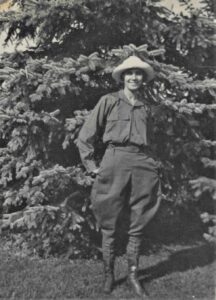
On the other hand, Bessie Marold’s legacy is a bit more notorious. Remembered not as a pillar of her community but as “the woman in white,” Marold has long been relegated to a ghost story. Born in 1893, she was a survivor and healer her entire life. Marold served in WWI, before coming to the JCRS as a patient and eventually becoming the community’s head nurse. However, when she was murdered by a patient in 1919 because she refused his proposal. Posthumously pigeonholed as the campus ghost. That was exactly the perception of Marold that the 360 Thinkers wanted to put to rest. “Everybody always says she’s the campus ghost, but she was more than that,” proclaimed the club president. The mural honors Marold as a nurse and veteran, not just as a victim whose death was trivialized for cheap scares. As the club dug deeper into Marold’s story, it sent the project in a whole new direction. Tothova and the club members discovered that Marold’s grave had a star next to it because she was a U.S. Army Veteran. Inspired by the star, the club embedded it into the mural to represent her healing characteristics.
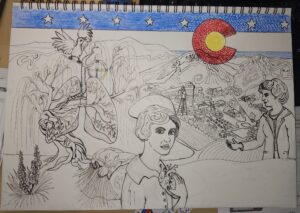
Incorporating other symbols into the mural was the final cherry on top of the design. Searching through each of these women’s lives and cultures, the 360 Thinkers accumulated and sketched all sorts of images. The club incorporated the Chipeta and Ouray mountains which were named for the Indigenous leader and her husband, as well as the healing yucca plants and a willow tree which also represented a historic willow on campus. The mural establishes the JCRS as a place of healing by incorporating images of the original gate. The final component of the 360 Thinkers mural doesn’t represent the past at all. The timeless RMCAD geodesic dome embodies the college’s future. Fitted with mirrors designed to replicate the dome’s unique shape, community members will literally see themselves in the mural’s story of excellence and healing.
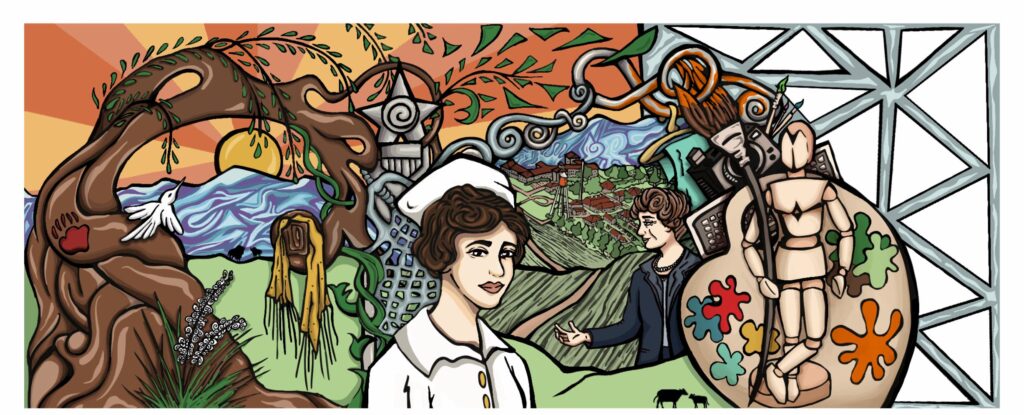
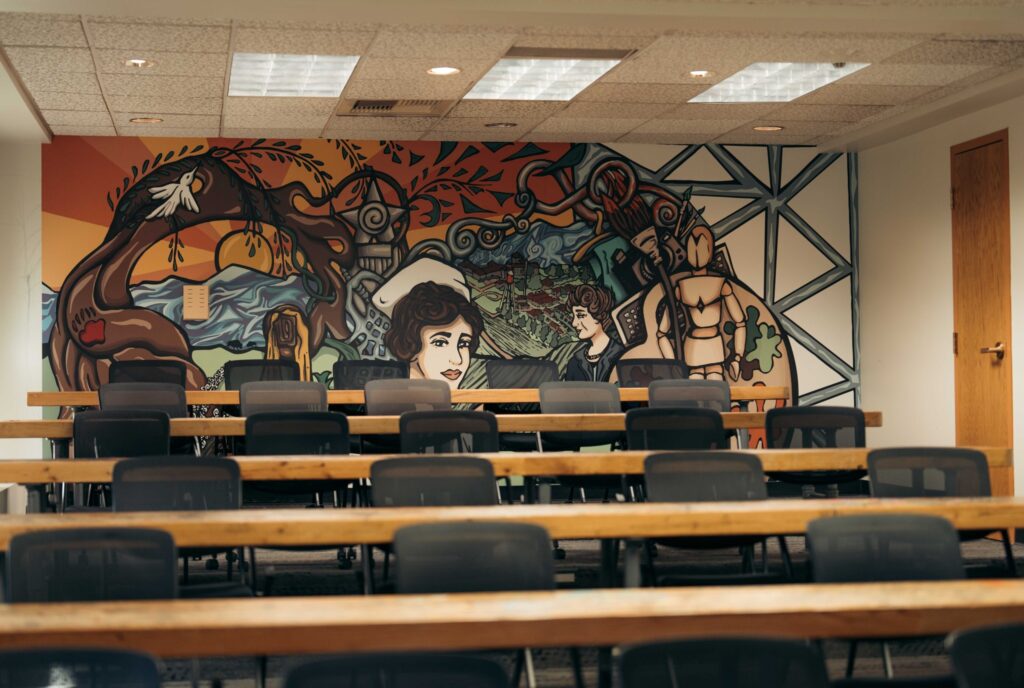
For Zuzana Tothova, she sees herself woven into this tapestry of women’s history. For her, connecting with each of these amazing women through this mural has been its own healing process, saying: “For me, art is healing. I love art and I always wanted to be an artist. I was never allowed to study art back in Europe.” As an artist, an immigrant, a student, and a mother, Tothova sees art as a way she can make the world a better place. In the end, the 360 Thinkers Club came together to not only honor the women who came before but have now left their mark so that each of their legacies will live on to inspire generations of women to come!
Credit for the mural goes to RMCAD students and 360 Thinkers Club members who researched and designed the final mural including Zuzana Tothova, Abel Miller, Mae Rogers, and Victoria Majchrowski.
Many of the quotes in this story have been edited for brevity and clarity by the author, but retain the significance and purpose of the original speaker.
Interested in making your mark?
At Rocky Mountain College of Art + Design, we’re proud to offer both on-campus and online degrees. Our degree programs prepare students for a full array of different art and design career paths. Interested in learning more about our art and design programs? Get in touch to request more information here or apply today.
